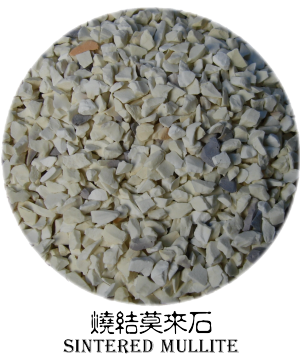
- Home
- About Us
- Products
- Product knowledge
-
News Center
News Center
- Contact Us






is a synthetic refractory material with the primary crystal phase of 3Al₂O₃·2SiO₂, densified via high-temperature sintering (typically 1500–1750°C). Due to the scarcity of natural mullite, industrial production relies on processing aluminosilicate raw materials (e.g., bauxite, kaolin) through grinding, homogenization, and sintering.
Key Properties
1. High-Temperature Performance
- Melting point >1850°C, service temperature >1700°C, low thermal expansion (5.3×10⁻⁶/K), minimal creep deformation, and exceptional thermal shock resistance.
2. Physical Stability
- Density 2.6–2.9 g/cm³, Mohs hardness 6–7, compressive strength 70–260 MPa, with high corrosion resistance to acids/alkaline slags.
3. Composition Flexibility
- Classified by alumina content into three grades:
| Grade | Al₂O₃ Content | Phase Composition |
| Low-Alumina | 42%~47% | Mullite + Glass + Cristobalite |
| Medium-Alumina | 58%~65% | Mullite + Minor Corundum/Glass |
| High-Alumina | 68%~75% | Mullite (>85%) + Trace Corundum|
Production Process
Raw Materials: Natural bauxite or Al₂O₃/SiO₂ mixtures, purified via washing and magnetic separation.
Procedure: Wet grinding (325 mesh) → Filter pressing → Extrusion → Sintering in tunnel kiln (1500–1750°C, grade-dependent) → Controlled cooling.
-Critical Step: Adding TiO₂, Y₂O₃ as sintering aids to reduce temperature and suppress grain-boundary phases.